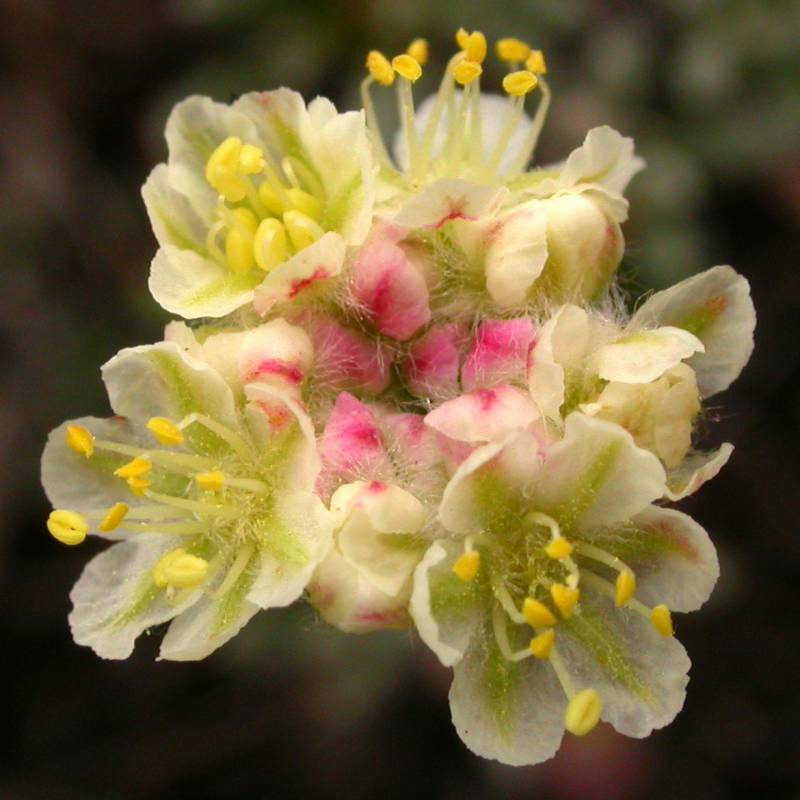Eriogonum thymoides
Eriogonum microtheca
thyme buckwheat, thyme-leaf wild buckwheat
slender buckwheat
Leaves many, linear to linear-spatulate, 3-10 mm. long, usually revolute, somewhat wooly beneath and silky above.
Leaves alternate, linear to oblong or narrowly obovate, 1-3 cm long, narrowed gradually to a short petiole, gray-woolly beneath and greenish but with some hairs above, crowded along the lower half of the stem.
Flowering stems 3-8 cm. tall, always with a whorl of leaves about mid-length;
involucres single and terminal, top-shaped, 3-5 mm. long, the teeth 6-8, erect, triangular, 1 mm. long;
perianth with a stipitate base 0.5-1 mm. long, densely hairy, the 6 segments obovate, yellow or white to rose-red, 4-6 mm. long; plants dioecious, the staminate flowers with 9 stamens, the filaments hairs only at the base, the pistillate flowers with stout, spreading styles 0.5-1 mm. long.
Inflorescence freely branching, open, flat-topped, 2-20 cm. long;
involucres borne singly, 2-2.5 mm. long, with short, scarious-margined teeth;
tepals top-shaped, 2-2.5 mm. long, white to pink or yellow, the rounded lobes somewhat longer than the tube, without a stipe at the base.
Achenes pubescent above
Achene
Eriogonum thymoides
Eriogonum microtheca
- Local floras:
CA,
OR,
WA
- Local Web sites:
CalFlora,
CalPhotos,
Flora NW,
PNW Herbaria
WildflowerSearch
iNaturalist (observations)
USDA Plants Database
- LBJ Wildflower Center
- SEINet
- Plants of the World Online
- Encyclopedia of Life
- Wikipedia
- Google Image Search



